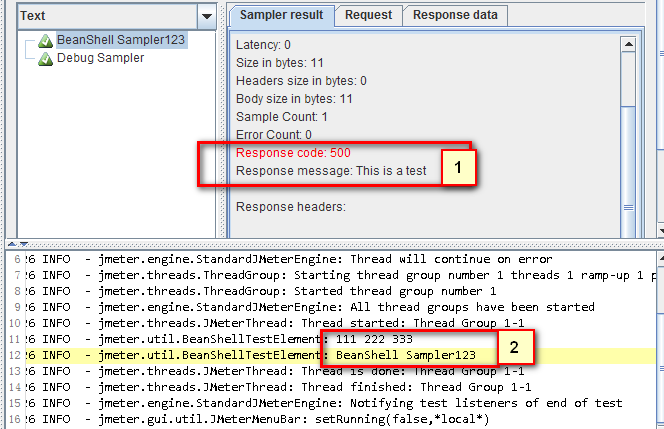BeanShell的用法
在此介绍下BeanShell PreProcessor的用法,其它的beahshell可以类推。在此我们使用beahshell调用自己写的工具类,工具类实现了密码的加、解密功能:
1、在eclipse写好代码,然后把该类打成jar包(在类上点击右键->Export->jar file)
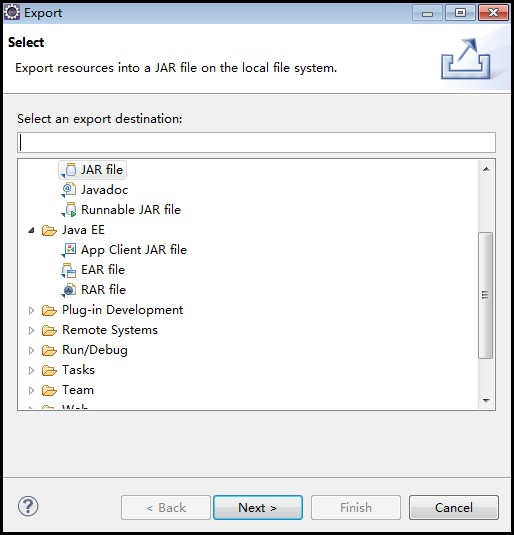
2、把jar包放到jmeter目录apache-jmeter-2.13libext下
3、打开jmeter,添加一个http sampler(调用登录接口),在sampler下添加一个BeanShell PreProcessor
4、在beanshell PreProcessor中导入我们的jar包,调用里面的加、解密码方法,把结果保存在jmeter变量中,下面两个方法是beanshell中我们最常用到的:
- vars.get(String paramStr):获得变量值
- vars.put(String key,String value):,将数据存到jmeter变量中

import com.pingan.ff.account.user.utils.*;
//加密
System.out.println("*****加密*****");
String password = "123123";
String encode = SecurityUtils.getKey(password);//调用工具类中的方法进行加密
System.out.println("Set my encode");
vars.put("encode",encode);//把值保存到jmeter变量encode中
String getEncode=vars.get("encode");
System.out.println("Get my encode: " + getEncode);
5、把加密后的密码存到jmeter变量中,然后在http sampler中就可以通过${encode}进行使用了:

6、执行脚本:
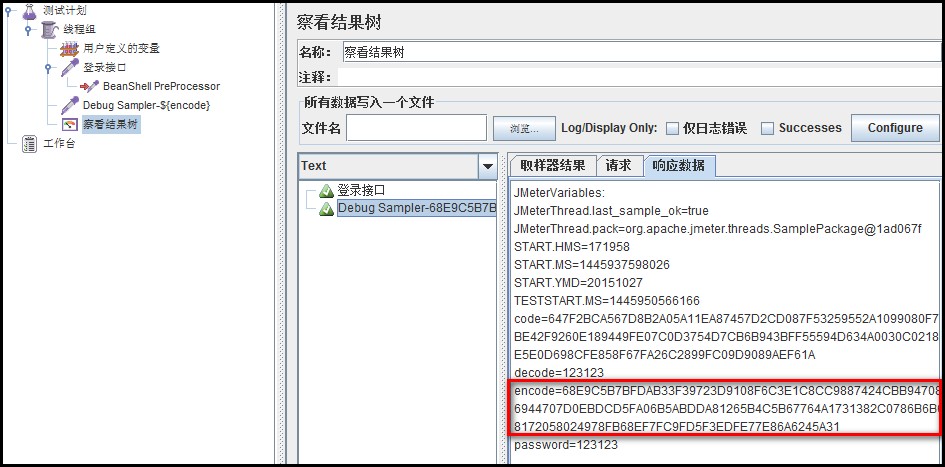
四、Bean Shell常用内置变量
JMeter在它的BeanShell中内置了变量,用户可以通过这些变量与JMeter进行交互,其中主要的变量及其使用方法如下:
-
log:写入信息到jmeber.log文件,使用方法:log.info(“This is log info!”);
-
ctx:该变量引用了当前线程的上下文,使用方法可参考:org.apache.jmeter.threads.JMeterContext。
-
vars - (JMeterVariables):操作jmeter变量,这个变量实际引用了JMeter线程中的局部变量容器(本质上是Map),它是测试用例与BeanShell交互的桥梁,常用方法:
a) vars.get(String key):从jmeter中获得变量值
b) vars.put(String key,String value):数据存到jmeter变量中
更多方法可参考:org.apache.jmeter.threads.JMeterVariables
-
props - (JMeterProperties - class java.util.Properties):操作jmeter属性,该变量引用了JMeter的配置信息,可以获取Jmeter的属性,它的使用方法与vars类似,但是只能put进去String类型的值,而不能是一个对象。对应于java.util.Properties。
a) props.get("START.HMS"); 注:START.HMS为属性名,在文件jmeter.properties中定义
b) props.put("PROP1","1234");
-
prev - (SampleResult):获取前面的sample返回的信息,常用方法:
a) getResponseDataAsString():获取响应信息
b) getResponseCode() :获取响应code
更多方法可参考:org.apache.jmeter.samplers.SampleResult
-
sampler - (Sampler):gives access to the current sampler
操作变量:通过使用Bean shell内置对象vars可以对变量进行存取操作
a) vars.get("name"):从jmeter中获得变量值
b) vars.put("key","value"):数据存到jmeter变量中
操作属性:通过使用Bean shell内置对象props 可以对属性进行存取操作
a) props.get("START.HMS"); 注:START.HMS为属性名,在文件jmeter.properties中定义
b) props.put("PROP1","1234");
引用外部Jar包:
上面四、五介绍了如何引用外部java和class文件,如果文件比较多时我们可以把它们打成一个jar包然后在jemter中调用,具体如何使用可以看我上一篇有介绍:Jmeter之Bean shell使用(一)。
在这里想补充一点的是jmeter中引入jar的方法:
1、上一篇中已使用过的:把jar包放到jmeter目录apache-jmeter-2.13libext下
2、在Test Plan的右侧面板最下方直接添加需要引用的jar包,如下图:

七、其它用法:
1、在Test Plan中定义如下三个变量:

2、Bean Shell可脚本如下:
a、bean shell可以接受传入参数,如下图:${u1} ${u2} ${u3}
b、参数可以通过bsh.args[]按顺序提取
c、bean shell提供了一个内置变量Parameters,来保存参数的集合
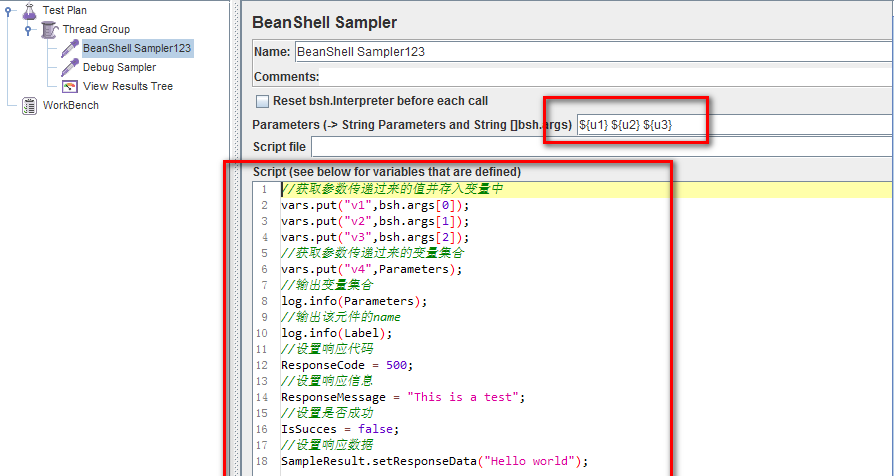
3、运行结果:
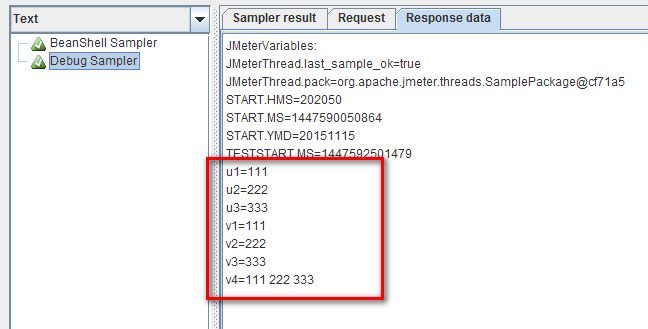
下图中1输入的这两句设置:
ResponseCode = 500;
ResponseMessage = "This is a test";
下图中2输入的这两句设置:
log.info(Parameters);
log.info(Label);
